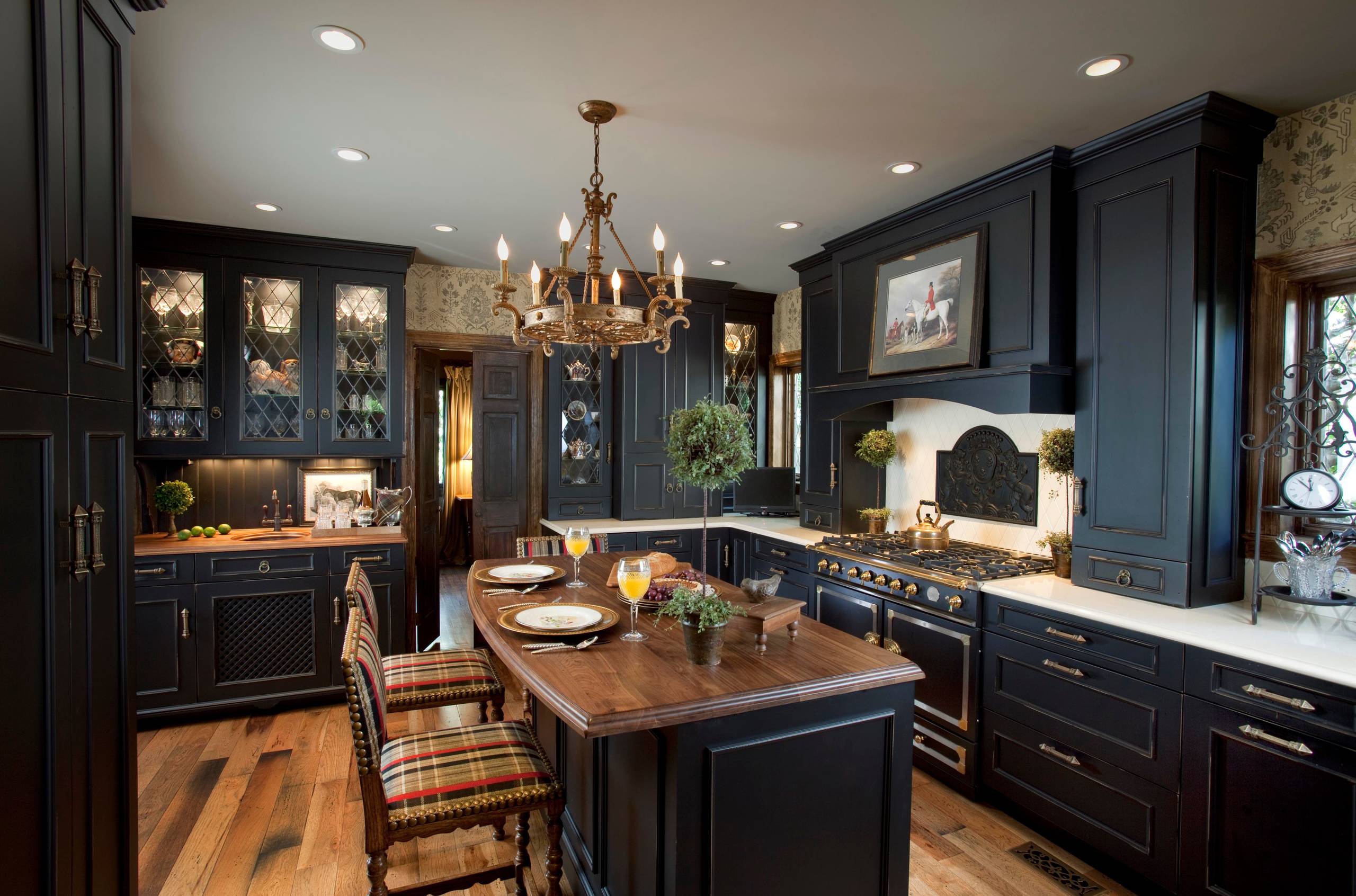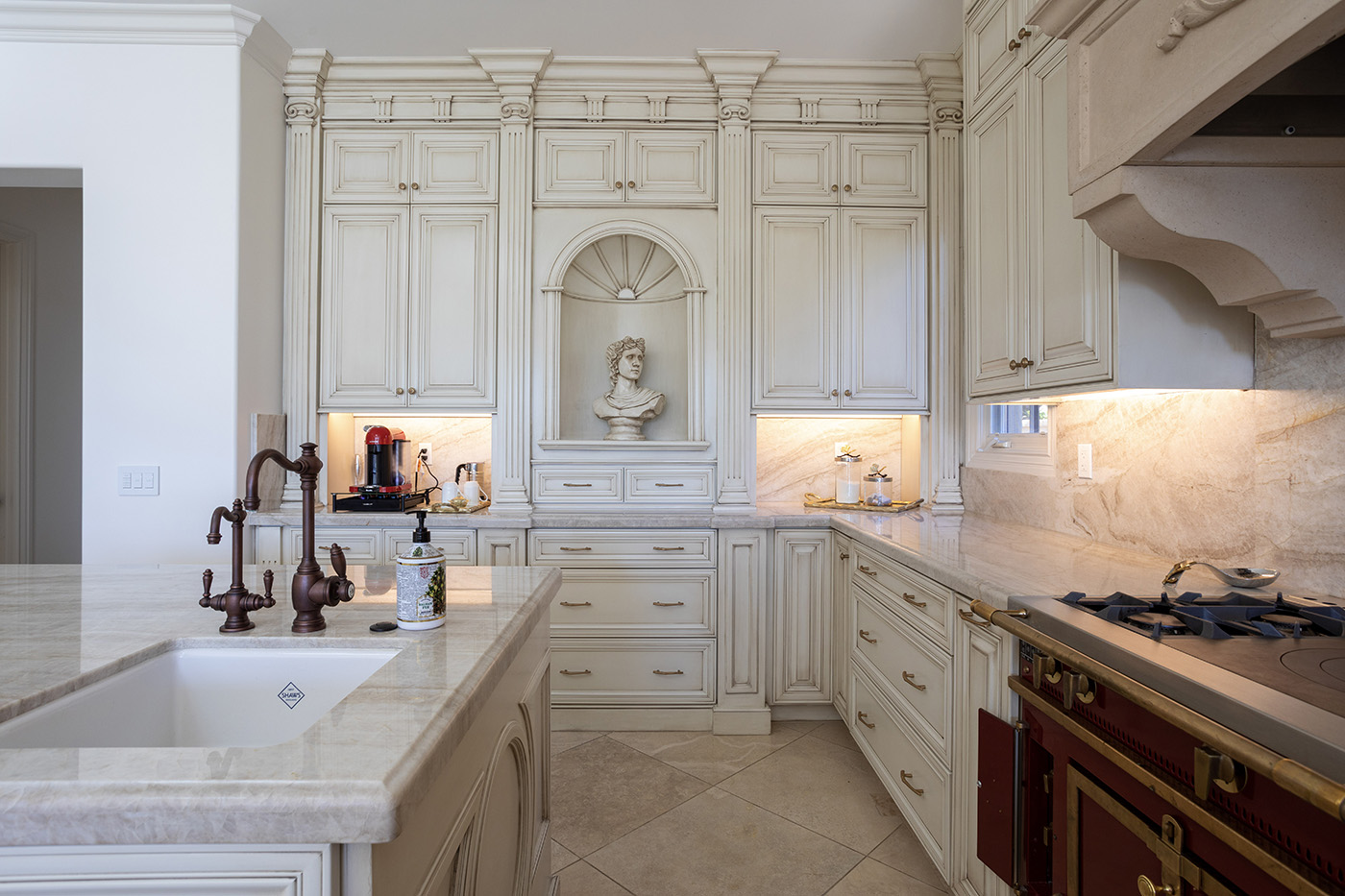Color Palettes and Finishes for Victorian Kitchen Cabinets: Victorian Style Kitchen Cabinets

Choosing the right color palette and finish for your Victorian kitchen cabinets is crucial in achieving that authentic, elegant aesthetic. The era’s rich history offers a wide range of possibilities, from deeply saturated jewel tones to softer, more muted hues. The careful selection of both color and finish will significantly impact the overall feel of the space, determining whether it exudes warmth and coziness or a more formal, grand impression.
Popular Victorian Kitchen Color Schemes
The Victorian era embraced a wide spectrum of colors, reflecting the diverse tastes and influences of the time. Understanding these prevalent color schemes allows for a more informed and historically accurate design approach. The following schemes represent some of the most popular choices for Victorian-inspired kitchens.
- Deep Jewel Tones: Think rich emeralds, sapphires, and rubies, often paired with deep mahogany or dark walnut woods. This creates a dramatic and luxurious atmosphere.
- Warm Neutrals: Creams, ivories, and soft beige tones form a sophisticated backdrop, allowing for pops of color in other areas of the kitchen. This palette is elegant and versatile.
- Muted Pastels: Subdued shades of lavender, rose, celadon, and powder blue offer a softer, more romantic Victorian feel. These colors work well in sunnier kitchens.
- Dark and Dramatic: Deep browns, blacks, and charcoal grays create a dramatic and sophisticated atmosphere. This scheme is ideal for larger kitchens with plenty of natural light.
- Victorian Inspired Greens: Olive greens, sage greens, and forest greens offer a more nature-inspired palette, reflecting the Victorian love of botanical themes. These shades pair well with natural wood tones.
Paint Finishes for Victorian Cabinets
The choice of paint finish significantly influences the overall appearance and feel of the Victorian kitchen cabinets. Each finish offers a unique aesthetic and practical considerations.
- Gloss: A high-gloss finish provides a highly reflective surface, making the cabinets appear more opulent and showcasing intricate details. However, it can also highlight imperfections in the cabinet surfaces and requires more maintenance.
- Matte: A matte finish offers a subtle, understated elegance. It minimizes imperfections and provides a warm, inviting feel. However, it may not be as durable as other finishes.
- Satin: A satin finish offers a balance between gloss and matte. It provides a soft sheen, hiding minor imperfections while maintaining a degree of durability and ease of cleaning. It’s often a popular choice for its versatility.
Victorian Kitchen Cabinet Color Scheme Examples
Below are three distinct color schemes showcasing different saturation levels, offering diverse design possibilities for a Victorian kitchen.
- Muted Scheme: Cabinets painted in “Balboa Mist” (Sherwin-Williams SW 6206), a soft, warm gray-beige. Walls in a slightly lighter shade, such as “Agreeable Gray” (Sherwin-Williams SW 7029). Accents in a muted sage green, such as “Sea Salt” (Sherwin-Williams SW 6204).
- Vibrant Scheme: Cabinets in a rich, deep teal, similar to “Teal Teal” (Benjamin Moore 2136-40). Walls in a warm, golden yellow, such as “Harvest Gold” (Benjamin Moore 2143-40). Accents in a deep burgundy or crimson.
- Dark Scheme: Cabinets in a deep charcoal gray, like “Iron Ore” (Sherwin-Williams SW 7069). Walls in a deep, saturated brown, such as “Urbane Bronze” (Sherwin-Williams SW 7048). Accents in a dark metallic, such as antique brass or blackened copper hardware.
Integrating Victorian Style Cabinets into Modern Kitchens

The juxtaposition of Victorian opulence and modern minimalism presents a fascinating design challenge. Victorian kitchens, characterized by intricate detailing, dark wood, and often cluttered layouts, stand in stark contrast to the clean lines, open spaces, and streamlined functionality favored in contemporary design. Successfully blending these distinct styles requires a nuanced understanding of both aesthetics and practical considerations.
Contrasting Victorian and Modern Kitchen Design Principles
Victorian kitchen design prioritizes ornate detailing, rich, dark wood, and a somewhat formal, compartmentalized layout. Materials commonly included heavy, carved wood, marble or granite countertops, and often featured built-in pantries and butler’s pantries. The aesthetic is one of grandeur and craftsmanship. In contrast, modern kitchens emphasize functionality, clean lines, and a sense of spaciousness. Open-plan layouts are common, with a focus on light, bright colors, and the use of sleek, minimalist materials like stainless steel and lacquered wood. The overall effect is one of simplicity and efficiency.
Methods for Integrating Victorian Cabinets into Modern Kitchens, Victorian style kitchen cabinets
Successfully integrating Victorian cabinets into a modern kitchen requires careful planning and execution. The goal is to create a harmonious blend, rather than a jarring clash of styles. Here are three effective methods:
- Strategic Placement: Instead of attempting to outfit the entire kitchen with Victorian cabinets, consider using them as a focal point in a specific area. For example, a Victorian-style island with a contrasting modern countertop could serve as a beautiful and functional centerpiece. This approach allows the Victorian details to shine without overwhelming the space.
- Color and Material Contrast: Choose a lighter, brighter color palette for the surrounding cabinetry and walls to offset the richness of the Victorian cabinets. This creates visual balance and prevents the kitchen from feeling too dark or heavy. Pairing the dark wood of Victorian cabinets with a sleek, stainless steel backsplash or modern pendant lighting further enhances the contrast and sophistication.
- Modernized Details: Update the hardware on the Victorian cabinets to reflect a more contemporary aesthetic. Replacing ornate knobs and pulls with simpler, more streamlined options can significantly modernize the look without sacrificing the inherent charm of the cabinets. Consider incorporating modern lighting fixtures and appliances to further complement the updated aesthetic.
Rewritten Article on Victorian Kitchen Cabinets
A Timeless Elegance: Exploring the Allure of Victorian Kitchen Cabinets
Victorian kitchen cabinets represent a bygone era of craftsmanship and artistry. Their enduring appeal lies in the intricate detailing, rich materials, and inherent sense of history they evoke. These cabinets are more than mere storage; they are statements of refined taste and a testament to the enduring power of traditional design.
The Craftsmanship of Victorian Cabinets
The hallmark of Victorian kitchen cabinets is the exceptional level of craftsmanship evident in every detail. From the hand-carved embellishments to the meticulously selected wood, these pieces are a testament to the dedication and skill of the artisans who created them.
The use of high-quality hardwoods, such as mahogany, cherry, and oak, contributed to both the durability and the aesthetic richness of these cabinets. Intricate carvings, often featuring floral motifs, geometric patterns, or classical designs, further enhanced their visual appeal. The attention to detail extended to the hardware, with elaborate knobs and pulls adding to the overall sense of opulence.
Integrating Victorian Cabinets into Contemporary Spaces
While traditionally found in period homes, Victorian kitchen cabinets can be successfully incorporated into modern settings. Careful consideration of color palettes, materials, and hardware is crucial to achieving a harmonious blend of old and new.
By strategically incorporating these cabinets into a modern kitchen design, one can create a space that seamlessly blends historical charm with contemporary functionality.
For instance, using Victorian cabinets for an island or a specific wall section, while employing sleek, minimalist cabinets elsewhere, allows for a balanced aesthetic. Similarly, contrasting the dark wood of the Victorian cabinets with light-colored walls and countertops can create a visually striking and harmonious space.
Preserving and Restoring Victorian Kitchen Cabinets
The preservation and restoration of antique Victorian kitchen cabinets is a labor of love that requires expertise and care. Proper cleaning, maintenance, and repair techniques are essential to ensuring these pieces remain a cherished part of the home’s history for generations to come. This includes the use of appropriate cleaning solutions, the careful repair of damaged wood, and the responsible replacement of missing or damaged hardware. The investment in preserving these pieces is a testament to the appreciation of fine craftsmanship and historical heritage.
